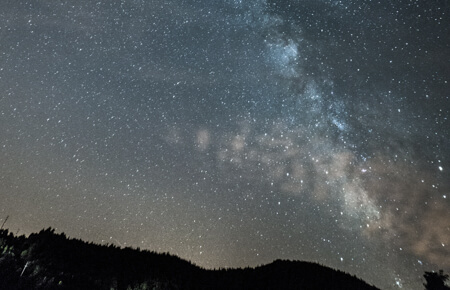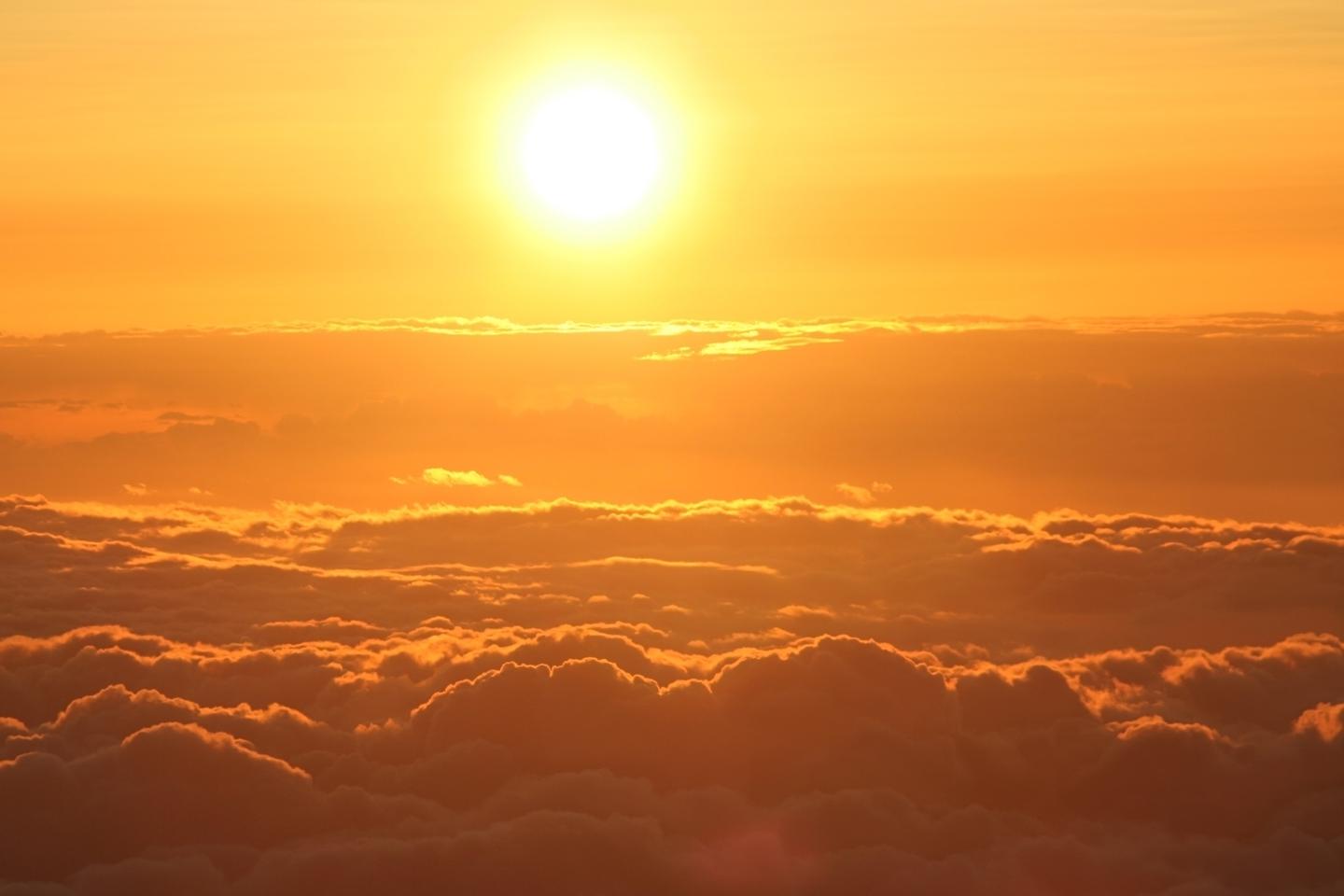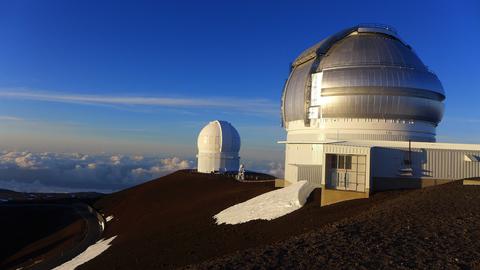
Summit Mauna Kea
If you’re in love the stars, no visit to the Big Island would be complete without a trip to the summit of Mauna Kea. Towering 13,796 feet above sea level, Mauna Kea--the White Mountain--is the highest point of elevation in Hawaii. The summit is dotted with enormous telescopes, all taking advantage of the clear air to pierce the mysteries of the universe.
Mauna Kea itself is a dormant volcano and last erupted some 4,000 years ago. The summit is one of the few places in the state where you can see snow and geologic evidence suggests glaciers have formed on the mountain in the past. The volcano offers two areas of interest to visitors: a visitors' center halfway up the volcano and the summit itself.
The Onizuka Center for International Astronomy
Situated 9,200 feet up the side of the mountain, the Onizuka Center for International Astronomy lies just before the paved road turns to gravel. Named for Ellison Onizuka, the Hawaiian-born Astronaut who lost his life in the Challenger space shuttle disaster, the visitor center offers an astronomy video, souvenirs (where else can you buy a Hawaiian ice scraper?), snacks and beverages.
Four days a week--on Tuesdays, Wednesdays, Fridays and Saturdays--local amatuer astronomers set up their telescopes at the center, so visitors can stargaze between 6:00 p.m. and 10:00 p.m. The center is usually busy on these days. There is only parking for 115 vehicles, so if you want to take part in the stargazing, consider arriving early. Once the parking lot is full, cars are turned away.
Visiting the Mauna Kea Summit
 After the visitor center, the road up to the summit turns to gravel, so only true 4-wheel drive vehicles (4WD) with low range travel is highly recommended. At the summit you can watch one of the most breathtaking sunsets in Hawaii, and tour the Subaru Telescope (space on tours is limited, so plan ahead). Visitors can stay at the summit for thirty-minutes after sunset.
After the visitor center, the road up to the summit turns to gravel, so only true 4-wheel drive vehicles (4WD) with low range travel is highly recommended. At the summit you can watch one of the most breathtaking sunsets in Hawaii, and tour the Subaru Telescope (space on tours is limited, so plan ahead). Visitors can stay at the summit for thirty-minutes after sunset.
There's much less oxygen at 13,796 feet, so watch for signs of “mountain sickness,” which include dizziness, nausea, poor judgement, headaches, shortness of breath and drowsiness. In rare cases, the elevation can cause aneurysm and blood clots.
Stopping for an hour at the visitor center before completing the ascent allows most to acclimatize to the rarefied air. Children under the age of sixteen should not go to the summit, and if you’ve been scubadiving, wait a full 24 hours before going up the volcano.

Respecting the Mountain
The summit of Mauna Kea is sacred to native Hawaiians, and the home of Poliahu, the snow goddess. Visitors are asked to respect the mountain, and not litter or disturb the environment in any way.
Getting to Mauna Kea
Before starting out for Mauna Kea, make sure you have warm clothes. Temperatures on the summit can drop as low as 30 Fahrenheit. You'll also want to gas up--the visitor center is a good 35 miles from the nearest gas station.
Follow Saddle Road (Hwy 200) until you reach the Mauna Kea access road (it’s directly across from parking form the Pu’u Huluhulu Cinder Cone). Drive carefully as you ascend. It’s not unusual for free range cows to cross the road, and in the dark and mist they can be difficult to see (the visitor center actually sells “Beware of Invisible Cows” bumper stickers).
At 9,200 feet you’ll find the visitor center. If you’re planning on continuing to the summit, stop here for an hour first to acclimatize to the elevation. After the visitor center things get tricky--the gravel road to the summit should only be attempted with 4WD, and most 4WD rental agencies don't allow you to take their vehicles to the Mauna Kea summit. Several tour agencies do make the trip however and include parkas and thick gloves so you don't have to pack your own winter gear all the way to Hawaii!
view more best ofview more activitiesview our hotels on hawaii island
